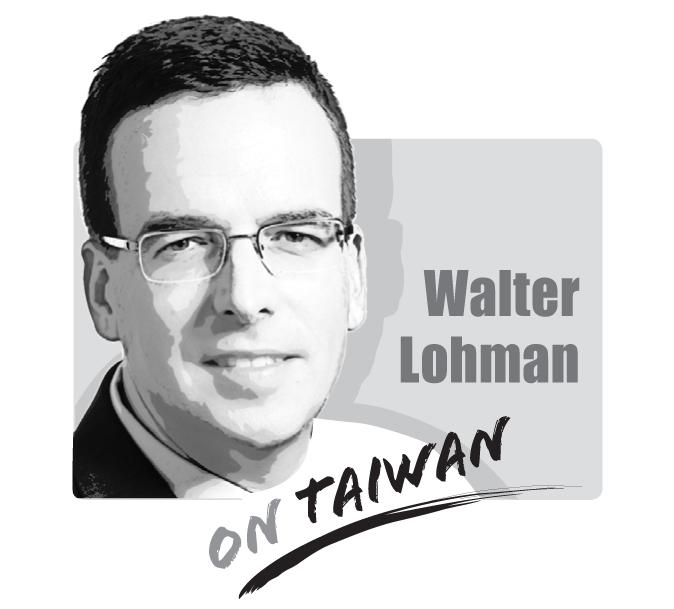Will the US come to the defense of Taiwan if and when China makes its move? Like most friends of Taiwan, I’ve been saying “yes” for a couple decades. But the truth is that none of us, in or out of government, really know. This is precisely why we all need to show humility in our advice on how Taiwan should prepare itself for such an eventuality.
After all, it’s their country, and they have no choice but to live with the consequences.
A couple weeks ago the New York Times published an article that put this reality in stark relief. As detailed there, the Biden administration is seriously committed to constraining the choices Taiwan can make in its choice of weapons purchases. This is not completely new. The US and Taiwan have consulted on Taiwan’s capabilities for decades. It does not always get what it wants.

The focus on “asymmetric capabilities” is also nothing new. Taiwan has not been in position to go toe-to-toe with China for a long time. No one denies this, in Taiwan or in the US.
There are, however, two additional questions.
The first revolves around whether China is capable of traversing the 100 miles of water that separates it from Taiwan in order to pull off an invasion. To listen to US officials, from INDOPACOM Commanders to the Director of National Intelligence, it soon may be. This realization is sinking in among Washington’s political class, and combined with the war in Ukraine, giving the issue much greater urgency.
It is not just the Biden administration zeroing in on it. Capitol Hill is, too. And both, increasingly, think they know what’s best for Taiwan’s ability to deal with it.
This raises the other question. What exactly constitutes an “asymmetric” weapon? The administration has a list. Leaders on the Hill have theirs. For the most recent arrivals to the issue, it’s easy: “Look at Ukraine. Get the Taiwanese as many Stingers and Javelins, and Harpoon anti-ship missiles as possible.”
Only from the comfort of the US could this look like an attractive option. Sure, the Russians expected by now to have installed a puppet government in Kiev. Thanks to the bravery of the Ukrainian people, they have failed. Makes for epic history. But on a human scale, it has been a nightmare.
Now, to be fair, the advocates of this strict interpretation of “asymmetric” do not want Taiwan to go through what Ukraine is. They see it as “deterrence by punishment.” In other words, the Chinese will see how much the war in Ukraine is costing Putin’s regime, see that we are equipping Taiwan similarly, and decide they don’t want to repeat the Russian experience.
Beijing is certainly studying what’s going on in Eastern Europe, but likely more for tactical clues than strategic ones, for tips on how to better fight than whether to fight. This is because strategically, Beijing’s mind has been made up for 70 years: It wants Taiwan as part of China, in a concrete sense. And it will go to war if necessary to get there.
In that it prioritizes hardening the Taiwan target over America’s own readiness for war, “deterrence by punishment” is also politically convenient. By contrast, “a strategy of denial,” that is, putting the US military in a position to deny China its goal of taking Taiwan, is expensive. It is also risky, not least due to degrading American military capabilities, administration budget cuts and continuing Congressional budget disfunction.
The only way the Biden administration’s strict approach to asymmetry works is if it is accompanied by a security guarantee. Here the message to Taiwan would be, “We just need you to hang in there until we can join you in force.” Any sacrifice Taiwan makes in the meantime would not be made in vain.
The problem is a guarantee isn’t going to be forthcoming. And for many reasons, including the above question about whether the US military is up to the task of defending Taiwan at acceptable risk, it shouldn’t be. If Washington ever gets to a point where it needs to be clearer about what it’s prepared to do in defense of Taiwan, it better be able to first demonstrate the capability to do it.
Short of an explicit security commitment, Washington must compromise with Taiwan on what it needs to wage an “asymmetric” war. Remember the pleas to get F-16s to Ukraine. Well, Taiwan thinks they can be useful in turning back aggressors, too. That’s why the Trump administration sold them more. Taiwan has also expressed interest in anti-submarine helicopters and airborne early-warning aircraft — the asymmetric value of which seems indisputable. These systems, however, do not meet the Biden administration definition of the term, and so Taiwan is being denied them.
Finally, another wrinkle in this equation. The threat to Taiwan is not only from all-out invasion. It needs to be in position to respond to a range of contingencies that, even on America’s most confident day, may not rise to a level that brings it into a war with China. Blockades, incursions into Taiwan’s ADIZ that slide into its airspace, humanitarian efforts turned hostile, and seizure of off-shore islands are just a handful of alternative scenarios short of doomsday that Taiwan needs to be prepared for.
I like to say I am certain that the US would come to Taiwan’s defense in case of a conflict. But I also know that if I were Taiwanese, I wouldn’t bet my country on such assertions. So give the Taiwanese some respect. Debate purchases with them, but don’t hold them hostage to the latest trends in American politics and strategic thinking. Give the Taiwanese what they think they need to defend themselves if the US doesn’t show up. Just in case.
Walter Lohman is the director of The Heritage Foundation’s Asian Studies Center.

Taiwan stands at the epicenter of a seismic shift that will determine the Indo-Pacific’s future security architecture. Whether deterrence prevails or collapses will reverberate far beyond the Taiwan Strait, fundamentally reshaping global power dynamics. The stakes could not be higher. Today, Taipei confronts an unprecedented convergence of threats from an increasingly muscular China that has intensified its multidimensional pressure campaign. Beijing’s strategy is comprehensive: military intimidation, diplomatic isolation, economic coercion, and sophisticated influence operations designed to fracture Taiwan’s democratic society from within. This challenge is magnified by Taiwan’s internal political divisions, which extend to fundamental questions about the island’s identity and future
The narrative surrounding Indian Prime Minister Narendra Modi’s attendance at last week’s Shanghai Cooperation Organization (SCO) summit — where he held hands with Russian President Vladimir Putin and chatted amiably with Chinese President Xi Jinping (習近平) — was widely framed as a signal of Modi distancing himself from the US and edging closer to regional autocrats. It was depicted as Modi reacting to the levying of high US tariffs, burying the hatchet over border disputes with China, and heralding less engagement with the Quadrilateral Security dialogue (Quad) composed of the US, India, Japan and Australia. With Modi in China for the
The Jamestown Foundation last week published an article exposing Beijing’s oil rigs and other potential dual-use platforms in waters near Pratas Island (Dongsha Island, 東沙島). China’s activities there resembled what they did in the East China Sea, inside the exclusive economic zones of Japan and South Korea, as well as with other South China Sea claimants. However, the most surprising element of the report was that the authors’ government contacts and Jamestown’s own evinced little awareness of China’s activities. That Beijing’s testing of Taiwanese (and its allies) situational awareness seemingly went unnoticed strongly suggests the need for more intelligence. Taiwan’s naval
The Chinese Nationalist Party (KMT) has postponed its chairperson candidate registration for two weeks, and so far, nine people have announced their intention to run for chairperson, the most on record, with more expected to announce their campaign in the final days. On the evening of Aug. 23, shortly after seven KMT lawmakers survived recall votes, KMT Chairman Eric Chu (朱立倫) announced he would step down and urged Taichung Mayor Lu Shiow-yen (盧秀燕) to step in and lead the party back to power. Lu immediately ruled herself out the following day, leaving the subject in question. In the days that followed, several